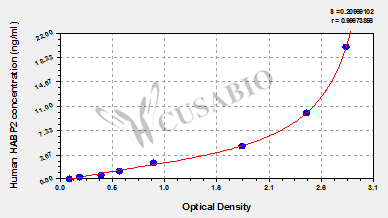The human HABP2 ELISA Kit is engineered for accurate measurement of human HABP2 levels from samples including serum, plasma, or tissue homogenates. It uses the Sandwich-ELISA mechanism in combination with the enzyme-substrate chromogenic reaction to measure the human HABP2 content in the sample. The color intensity is positively correlated with HABP2 content in the sample. This kit has been validated against standards of sensitivity, specificity, precision, linearity, recovery, and lot-to-lot consistency.
HABP2, also called FSAP, is an extracellular serine protease involved in the extrinsic pathway of blood coagulation via activation of factor VII and fibrinolysis via activation of pro-urokinase type plasminogen activator (pro-uPA). It negatively regulates vascular integrity via activation of PAR receptor/RhoA/ROCK signaling. It has been implicated in several disease processes including atherosclerosis and deep venous thrombosis. Upregulation of HABP2 has been found in the pulmonary vasculature with acute lung injury (ALI) and promotes disruption of vascular integrity.






